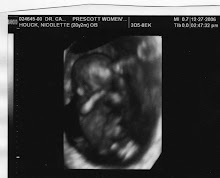
This is the punnet square of the Flys!
 This is the Dragons!
This is the Dragons!The first lab we are doing is on the dragons, with this lab we are using different recessive and dominate genes to help the dragons become similar. This will include changed the color, shape, and facial features different of one dragon to have it look similar to the other.
The second lab we are going to use punnett squares to see who will have the long wings when they are born. Each parent has one recessive and dominate gene. This gives there kids one in 4 chances to have short wings.
These are showing how we inherent different traits. When a baby is conceived they receive 23 chromosomes from each parent. With in these chromosomes the child will there gender chosen, skin color, blue or brown eyes, hair color, and so on.
The genotype is the genes of an individual for a particular trait or traits; often designated by letters, BB or Bb. When you are in the dragon lab and you are trying to get the two dragons to match you choosing different recessive and dominate genes to change the color, horn, feet, and other characteristics.
Phenotype is the visible results of the genotype. This shown in the dragon lab by the color of the wings, horn and the visible characteristics.
Allele is the alternative for of a gene.
The dominant genes mask the expression of the recessive gene.
The recessive genes this takes a back seat to a dominate gene.
During the lab you are using dominate and recessive genes to help determine the different characteristics of the fruit-fly’s and dragons. When there is a dominate gene involved the recessive gene will always loose.
However there is an exception the recessive gene. The recessive gene will be shown if there are two recessive genes involved.
As you can see the dragon has an Hh gene to create the horns on the dragon. If we were to put two recessive genes there, their wouldn’t be any horns. This how the dominate and recessive gene are shown in this lab. Amongst the other characteristics.
Considering that both parents are recessive and dominate then each of there children will also have the possibility of having the recessive gene of short wings. This means that if they have babies with another fruit-fly and they have the recessive gene then there kids will have the possibility of having the short wings too.
The second lab we are going to use punnett squares to see who will have the long wings when they are born. Each parent has one recessive and dominate gene. This gives there kids one in 4 chances to have short wings.
These are showing how we inherent different traits. When a baby is conceived they receive 23 chromosomes from each parent. With in these chromosomes the child will there gender chosen, skin color, blue or brown eyes, hair color, and so on.
The genotype is the genes of an individual for a particular trait or traits; often designated by letters, BB or Bb. When you are in the dragon lab and you are trying to get the two dragons to match you choosing different recessive and dominate genes to change the color, horn, feet, and other characteristics.
Phenotype is the visible results of the genotype. This shown in the dragon lab by the color of the wings, horn and the visible characteristics.
Allele is the alternative for of a gene.
The dominant genes mask the expression of the recessive gene.
The recessive genes this takes a back seat to a dominate gene.
During the lab you are using dominate and recessive genes to help determine the different characteristics of the fruit-fly’s and dragons. When there is a dominate gene involved the recessive gene will always loose.
However there is an exception the recessive gene. The recessive gene will be shown if there are two recessive genes involved.
As you can see the dragon has an Hh gene to create the horns on the dragon. If we were to put two recessive genes there, their wouldn’t be any horns. This how the dominate and recessive gene are shown in this lab. Amongst the other characteristics.
Considering that both parents are recessive and dominate then each of there children will also have the possibility of having the recessive gene of short wings. This means that if they have babies with another fruit-fly and they have the recessive gene then there kids will have the possibility of having the short wings too.

No comments:
Post a Comment